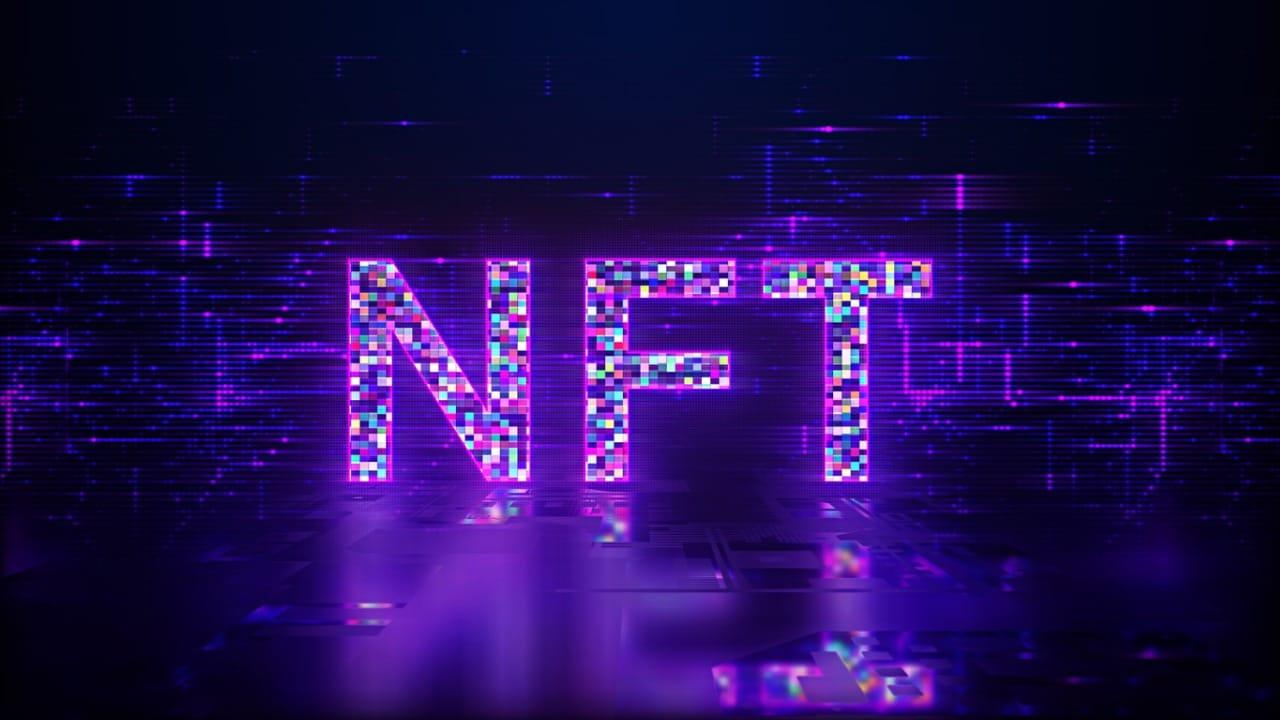Both newcomers and seasoned users should understand the importance of NFT security and how to prevent NFT scams. But in terms of NFTs, what do safety and security really mean? How can we stay away from NFT and cryptocurrency scams?
These are important and valid concerns, and Seattle Software Developers wants to directly respond to them. Now, scams, hacks, and other security risks are still a concern for NFT owners. Due to this, we are pleased to introduce our security 101, which aims to inform both experts and beginners. Here are some basics of NFT security in case you’re interested in learning what an NFT wallet is, how to safeguard your NFT collection, or how to avoid scams.
Web3 Security Fundamentals Can Help You Avoid NFT Scams
You must understand the fundamentals of NFT Security before we can discuss how you can ensure that your NFTs are completely safe. Let’s look at some fundamental NFT knowledge you might need to be aware of to commence.
First off, a password protects your money. A secret key or seedphrase is what this is. Recapping each of these and what they imply for your NFT security will be the first step.
What is a private key? Let’s start at the beginning.
Owning cryptocurrency entails possessing the secret key for the blockchain address where the cryptocurrency is stored. The private key establishes your ownership of the commodity, regardless of whether you’re interested in coins, tokens, or NFTs.
But be cautious! You can’t access your crypto wallet or any of the NFTs it holds if you lose your secret key or allow it to get into the wrong hands.
The most important lesson is that the security of your entire NFT collection depends on how you keep your private key. NFT purses fill a need in this situation.
An NFT wallet
A digital crypto wallet that lets you keep the private keys for your NFTs is essentially what an NFT wallet is. You should be aware of the distinctions between the following categories of cryptocurrency wallets in order to correctly secure your own NFT collection:
Hardware vs. software wallets are discussed first, followed by private vs. non-custodial wallets. Recapping each of these and what they imply for your NFT security will be the first step.
Wallets: Custodial vs. Non-Custodial
Cryptocurrency accounts can, in general, be classified as either custodial or non-custodial. Software wallets with platform-held secret keys are referred to as custodial wallets. One notable example is Coinbase, which provides a built-in cryptocurrency vault. A custodial wallet has the advantage of being straightforward: the platform manages the secret keys, and you, the user, just “log in” to access your wallet. You give up security and control for ease because you don’t really have any control over the wallet’s contents because you don’t have access to the private keys.
A non-custodial wallet, on the other hand, is one whose private keys are managed exclusively by you, the owner. This means you still have complete control over your NFTs, but it also means you’re in charge of how you handle and protect those crucial buttons.
Non-custodial wallets come in various varieties, each with varying degrees of security. Now let’s delve deeply into those.
Software wallets: Extremely Convenient, Very Unsecure
On your computer or phone, software wallets like MetaMask are a practical method for users to manage their own private keys. (more on that to come). However, they have significant drawbacks that make them a less safe method of NFT storage.
They are also referred to as “hot wallets” because of their online nature, which makes them vulnerable to various types of attacks carried out through your internet link. In the past, a significant phishing attempt exposed all MetaMask users on iCloud to risk. Attacks like these, which target your software currency, can jeopardize your NFT security. (and the private keys stored within them). This will always be a danger as long as that interface is present on a connected device.
Hardware wallets: Highest Levels of Security, Minimum Convenience
Hardware purses are a lot more secure. Let’s define an electronic wallet first. Hardware wallets are tangible objects where you can store your private keys and keep them safe since they are independent of your computer or phone. The idea behind doing this is to keep them away from your internet link and the risks that are present there, greatly increasing the security of both your NFTs and them. Anyone regularly purchasing NFTs or other cryptocurrency assets ought to use a hardware wallet to keep those assets secure.
The Secret To Preventing NFT Scams
By now, you’ve undoubtedly realized that managing your NFTs requires finding the right balance between two important factors: security and usability. It can be challenging to strike a balance between these two factors, it must be said. While proper security requires keeping your private keys offline, ease of use frequently entails protecting them using a program interface on a connected device. So how can you seamlessly engage with Web3 while being completely at ease?
The solution is to employ a system that blends the convenience of an online management interface with the security of a hardware wallet.
Ledger Nano and Ledger Live, a partnership
A great illustration of this strategy in motion is Ledger.
The safest and most enjoyable way to learn about the Web3 ecosystem is with its hardware wallet (Ledger Nano), which keeps your NFT private keys offline at all times. Ledger Live, its management interface, makes it simple to buy, sell, visualize, and manage your NFTs. As you engage with dApps, Ledger Live’s NFT integration, which displays all the details of any NFT transaction you go to sign through the application, ensures maximum transparency and reduces the risk of blind signing.
You can obtain all the crucial information about an NFT deal and safeguard your NFTs using Ledger Live.
How Does a Seed Phrase Work and What Is It?
Without mentioning the seed phrase, the topic of NFT security cannot be properly discussed. (or recovery phrase). A set of 24 words known as the seed phrase is always provided when you establish your own cryptocurrency wallet; it serves as a backup of all the private keys stored there and enables you to recover your assets on another wallet even if you lose access to the original.
Because ANYONE can use these (up to) 24 words to retrieve your crypto assets using any other wallet, it is crucial to keep them secure. Your ability to control these phrases will make or break your security because they act as the master key to your priceless NFTs.
How to Take Care of Your Seed Phrase
When it comes to controlling your seed term, there are a few key guidelines. Now let’s go over some of these additional crucial NFT security advice.
First off, never divulge your seed word to anyone. Again, read that.
It’s that simple: if someone learns your seed word, your NFTs are gone. Although it might seem simple, there are a few factors to take into account when deciding how to store these words.
Where To Keep Your Private Keys and Seed Phrase
Never record a phrase on a device that will be linked to the internet, such as a phone or computer. You already know from our previous part that connected devices make it possible for scammers and hackers to access your private information; they can do this by clicking on malicious links that install spyware on your device, so connected devices shouldn’t be used to store your valuable seed phrase.
Instead, be careful to capture your seed phrase in writing (or, preferably, on metal so that it cannot be lost to fire or water) so that it can be preserved. If you ever lose access to your NFT money, this is your only backup. Yes, you are correct; once you loose it, there is no turning back.
Home Is Where NFT Security Begins
It’s crucial to keep your secret keys and seed phrase in a secure location. Some people store them in a safe location in their home, in a personal safe, in a safety deposit box, or with a close family member they can trust. Even some individuals engrave their seed phrase on sheets of thin metal!
The Winklevoss Twins are renowned for treating the safekeeping of their private keys very carefully. They divided it into various pieces. They then placed each component in various institutions located in each of the US’s four time zones.
Most likely, you won’t need to go that far! Nevertheless, it is a high-level security practice to divide up copies of your seed phrase (and/or private keys) and store them in various locations. Whatever location you choose for your seed phrase, safeguarding it well entails maintaining the safety of your NFTs. create sure it is still available, and you might want to create a few copies just in case.
The Impact of Smart Contracts on NFT Security
Digital arrangements with no middleman are known as smart contracts. As a result, blockchain users can communicate “trustlessly” with one another and with decentralized applications.
However, be careful! Once you accept a smart contract, the action it causes cannot be undone. As a result, scammers seeking to gain access to your NFTs under deceptive pretenses frequently use smart contracts as a means of doing so. Users are frequently duped into engaging with malicious smart contracts in today’s scams. In essence, the con artists force you to let yourself in. This is why it’s so crucial for NFT protection that you comprehend what you’re agreeing to.
Blindly Signing Contracts Without Reading The Fine Print Exposes Your NFTs
People’s ignorance of smart contracts is used by con artists to trick them into signing fraudulent deals. For instance, you might believe you are authorizing the purchase of an NFT when, in reality, the contract you are signing gives the scammer access to every NFT in your wallet.
Because crypto wallets can’t always show complete smart contract details, it can be difficult to see what you’re signing. This is a serious vulnerability. Your NFTs and crypto are highly vulnerable as a result of this practice known as blind signing. Even when the details are presented, the typical user may find it challenging to understand them due to their technical nature. You are the gatekeeper for the protection of your NFTs in both situations. They are only secure with you, after all.
How To Guard Against Blind Signing
The greatest strategy for achieving this is a two-pronged one. Selecting a wallet that supports clear signing, also known as complete display of smart contract information, is the first step in this process. Ledger Nano enables clear signing for deals with integrated dApps and platforms, which is one significant advantage it offers to the market. This means that you will always be able to see all pertinent information and know precisely what you’re agreeing to when you’re signing a transaction. This implies that there are no unpleasant shocks or nefarious motives.
But to do this successfully, you must also be able to comprehend what you’re reading, which necessitates spending the time to educate yourself on how to decipher smart contract details.
Understanding Smart Contracts
You look for smart contracts using blockchain explorers like Ethereum’s Etherscan to find out more information about them. The contract address is all you need to locate a smart contract on a block viewer.
There, you will discover a number of significant details about the smart contract, including who implemented it and what it does, both of which are crucial for confidently verifying your own transactions. Knowing these components can help you spot fraudulent deals and prevent you from signing one.
Basics of NFT Security for Web3: How to Avoid Scams
There are a few guidelines you need to keep in mind for remaining safe as you investigate and interact with Web3 in addition to the fundamentals of smart contracts and transacting.
- Do not rely on stealth mints
- Do not click on random websites
- Only Connect to reliable websites and initiatives, and carefully verify every website URL
Most scams can be avoided by following this guidance, but let’s look at the ones that are currently most prevalent:
What NFT phishing scams are the most well-known?
The most prevalent NFT fraud right now is phishing. In case you weren’t aware, hacking is a type of social engineering. It includes malicious actors sending people messages. These communications intentionally entice recipients to divulge sensitive information that jeopardizes their security.
In the case of NFTs, phishing scams either try to persuade people to sign fraudulent transactions or divulge their secret key or seed phrase.
Who Do NFT Scammers Aim to Con?
Phishing schemes specifically target owners of high-value NFTs like BAYC, Doodles, and Azuki. In reality, OpenSea has experienced problems with phishing scams that target its users.
Then there are NFT exchanges scams. Hackers target people who are actively seeking to trade their NFTs in these situations. They communicate with them and hold “trade talks,” typically using Discord or Twitter. After that, they give the target a fake trade link. If the trade is completed, the individual could lose everything in their wallet in addition to the NFT they were trying to trade.
Security for NFT on Social Media
Because NFTs are all about community, there will be a lot of contact with other community members on social media platforms like Twitter and Discord, which serve as the excitement’s main hubs. However, these hubs are a wonderful venue for opportunists with so many people and so much hype all in one place, so it’s important that you are aware of the risks you face here.
Discord NFT Scams
Discord is a popular place for NFT initiatives and communities, so it’s common to run into con artists there. Phishing attacks against administrators and moderators of the Discord server are a common starting point for hacking. These fraud artists will frequently send you DMs from accounts that appear to be trustworthy.
Targets are prompted to bookmark a URL in Discord in a well-known NFT scam on Discord. The bookmarked URL actually executes JavaScript code. Unfortunately, doing so gives a hacker access to the person’s Discord account and any servers they have rights to access.
Turning off DMs from people you don’t know is the first and most important NFT security guideline on Discord. You already eliminate the majority of scammers by only allowing DMs from friends you approve. You can also read Ledger’s advice on remaining safe on Discord if you want to learn more.
Twitter NFT Scams
Twitter is a haven for scammers in addition to being the social media network of preference for the NFT community.
Project Twitter accounts are rarely themselves compromised, but con artists have started stealing or purchasing other, typically verified, accounts. They then pose as a project or its leader and point people toward a harmful link. This most frequently occurs just before or immediately after a big project release. This was the situation with the Beanz airdrop, Moonbirds, and Otherside mint from Yuga Labs.
Verify any accounts posting links for any type of NFT activity three times. If a verified account mentions your account in a list of others in a Twitter reply, it has probably been compromised. Never click on any of the URLs fake accounts post, make sure to report them, and block them.
How Do Malicious NFTs Work?
Sending malicious NFTs to crypto accounts is a common scam today. Smart contracts-enabled coins known as malicious NFTs have the potential to put users’ security at risk. These NFTs are even more sneaky because they are typically airdropped right into people’s purses.
While some malicious NFTs are apparent, others can fool people by appearing to be stealth mints from well-known brands. These NFTs have a variety of effects on you, including erasing coins and NFTs from your wallet.
What Should I Do If I Receive a Threatening NFT?
Even though malicious NFTs cannot steal money or NFTs from your wallet, their apparently excellent offers are unreal. In this case, the bidder on your fraudulent NFT will make sure that the deal fails. Unfortunately, most marketplaces contain flaws that enable con artists to make a bid and then retract their acceptance, which is annoying. Instead, deceptive NFTs almost always entice collectors and encourage them to engage with different contracts and websites.
In other words, if you receive an NFT via airdrop, you shouldn’t even bother to peruse the description. Keep it where it belongs—in the secret folder.
The Most Serious NFT Security Flaw Is FOMO
Not all NFT frauds are sophisticated. Just like in real life, some con artists depend on getting you excited about something that isn’t quite what it seems, and Web3’s well-known FOMO vibes provide the ideal setting for opportunists to use these strategies.
Rugpull Explained
Rug Pulls are a totally distinct category of NFT fraud. They might not put your existing NFTs’ security at risk, but they can definitely steal your money!
A rug pull essentially occurs when an NFT project goes through all the standard hoops prior to minting, only to take the buyers’ money and flee after that. If you’re interested in learning more, Ledger has an excellent guide that goes into greater detail about what rug pulls are.
After mint, quick cash grab rug pulls are very apparent. The project creators frequently just delete all identities connected to the project and vanish. Some more cunning con artists, such as those responsible for the Racoon Secret Society and the Balloonsville rug draws, enjoy taunting their victims as they leave. In essence, they’ll alter the NFT’s information and give you something you didn’t request. Knowing where to keep your NFTs is crucial for this reason.
Slow Rug Explained
Rug pulls that are slow or gentle are much tougher to spot. But what precisely is a soft rug pull? They are essentially slow-burning initiatives that eventually fizzle out. It can be extremely difficult to determine whether an NFT initiative fails as a result of wrongdoing, incompetence, or unforeseen obstacles.
Sadly, this means that many con artists can get away with slow rug pulls because they can always say that they had good motives. They then gradually withdraw the money while making fewer social media posts.
Spotting Rug Pulls
NFT Rug pull initiatives can be challenging to identify, but the following are some major warning signs:
Untrustworthy creators
There are currently NFT rug pullers who have a history of exploiting their local populations. Numerous leaders, famous people, and even some NFT OGs have actually been charged with rug pulling. Just look at Lana Rhoades’ and Logan Paul’s NFT endeavors as two excellent examples. The NFT record of Floyd Mayweather isn’t all that terrific either.
Particularly celebrities have a lot of influence over how lucrative money captures are made. Be extremely wary of influencer mints or NFT initiatives from celebrities. Once you identify the area’s serial offenders, turn around immediately!
What Is Hard Shilling
So let’s start by defining Shilling. In a nutshell, it’s the act of endorsing a cryptocurrency or NFT initiative. In terms of NFTs, it’s essentially an unavoidable fact of existence. In actuality, if there is a line at all between selling and marketing, it is razor-thin.
However, there is a specific type of aggressive selling that can be a dead indicator for scams.
Rug pull initiatives frequently lack a true community, so they use paid advertising to spread word of their scams. A celebrity or influential person, or even sponsored promotion on Twitter and Instagram, can accomplish this. In either case, it’s beneficial to understand the distinction between genuine, community-led promotion and aggressive selling.
Suspicious Bot Activity and Community Involvement
Twitter profiles for projects and Discord servers can also be a dead giveaway of rug pulls. A project that has a sizable following on both platforms but disproportionately low engagement levels probably used bots to inflate their statistics.
Strangely worded messages that are frequently repeated word for word by different accounts are another method bots are exposed. This can be seen in the case of Unc0vered NFT, who ultimately devastated the neighborhood.
NFT Security Tools To Assist You in Preventing Fraud
The benefit of Web3 is that you have a wealth of tools at your disposal to evaluate initiatives that interest you critically. Knowing what these tools can do, then, places you in a fantastic position to move through the space safely.
You Can Protect Your NFTs Buy Using Tools Like Rarity Sniper, NFTGO, and Others
Perhaps you’ve seen a bargain with NFT that seems improbable. It most likely is! Before giving your money away, it’s always a good idea to examine NFT data sites for a collection’s most recent statistics.
Before buying or selling anything of worth, be cautious and verify the floor prices, recent sales, and rarity of your NFTs. Tools that can provide you with insider knowledge on NFT initiatives can be found on Rarity.tools, Rarity Sniper, and NFTGO. Additionally, some commercial NFT analytics tools, such as icy.tools and breadcrumbs, can provide you with even more data and analysis.
Using Etherscan, you can examine vectors for NFT projects that interest you, including token distribution, sales activity, and project lineage. All of these allow you to learn more about your possibilities before investing in them.
Use the NFT News and Media Sites to Educate Yourself
By subscribing to NFT Media websites, YouTube channels, and newsletters, you can educate yourself about technology and remain informed about the most recent scams and hacks. For your benefit, NFTevening offers material through each of these channels as well as others.
To prevent our readers from losing their valuable NFTs, we frequently discuss the most recent scams and rug pulls. Make sure to subscribe to our email for daily updates so you can be the first to learn about new con artists.
Last Words on NFT Security
In conclusion, there are many factors involved in ensuring the security of your NFTs, from comprehending technical details like smart contracts and private keys to spotting the telltale indications of a phony project or founder. If you want to use Web3 safely, you should thoroughly investigate each of these perspectives.
Decentralization, cryptography, and the world of NFTs are exciting frontiers that are quickly developing, but we must also be aware of the increased responsibilities that come with Web 3. Security is ultimately something that each of us must take responsibility for.
Seattle Software Developers can help you launch your own NFTs. Contact us today to speak with an NFT Developer.




